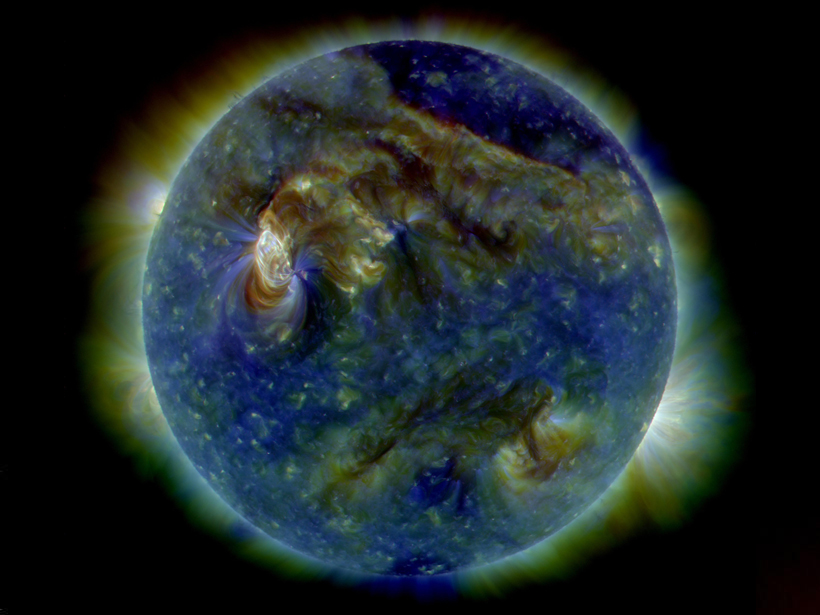“When hoping to understand the behaviors of a complex system, one needs to analyze not only how different components work together to form the behaviors of the whole system but also the behaviors of the individual parts. Without deep and specific comprehension of the behaviors of the individual parts, there will be no way to capture the behaviors of the complex system.”
These words, from Systems Science: Methodological Approaches by Yi Lin et al., summarize the ethos of the Exploring Systems-Science Techniques for the Earth’s Magnetosphere-Ionosphere-Thermosphere meeting held this summer. The meeting took on the task of characterizing the current state of the study of Earth’s space environment and defining future directions for the system science approach.
To foster an environment with an appropriate diversity of expertise, the 26 participants came together from a group of disparate scientific disciplines: plasma physics, magnetosphere-ionosphere-thermosphere (M-I-T) science, space systems engineering, big data analytics, complex systems research, applied mathematics, and data science.
An interdisciplinary group was charged with assessing the current state, future needs, and means to progress “system science” for the M-I-T system.
This interdisciplinary group was charged by the organizing Space Science Institute to assess the current state, future needs, and means to progress “system science” for the M-I-T system. Three provocative questions were posed to the leaders in attendance:
- What are the system properties of the M-I-T system?
- What new mathematical techniques and methodologies are required to progress M-I-T system science?
- In the context of funding, observational limitations, and the advent of sophisticated new tools to perform data-driven discovery, how can M-I-T system science be advanced?
The outcome was a rich conversation, taking place across the 3-day meeting, about previous efforts, current challenges, and new ideas to accomplish M-I-T system science. Discussions were organically structured around three topics in particular: (1) coupled modeling, (2) statistical inference, and (3) system complexity.
Participants embraced these themes and created a new definition for system science (see Figure 1). Despite being only one possible arrangement of system science, it provided a useful foundation on which to build an understanding of the current capabilities and shortcomings of M-I-T system science and new areas of need (e.g., the intersection of statistical inference, perhaps in the form of machine learning, and coupled models). The group reached several conclusions:
- Sophisticated tools from the field of data science will allow researchers to use available data to study the M-I-T system in new, comprehensive ways.
- Existing observational capabilities must be augmented, emerging technologies must be tapped, and innovative approaches must be explored.
- New funding avenues, likely accessed through interdisciplinary collaborations, must be embraced to progress M-I-T system science.
- The term “integrative science” was used during discussions as a call for thinking about the entire system, integrating across the disciplines, and using a diversity of techniques.

The outcomes of the meeting, particularly a new possible definition for system science, have a resounding message across scientific disciplines, reaching beyond the M-I-T system.
—Ryan McGranaghan (email: [email protected]), University Corporation for Atmospheric Research, Boulder, Colo.; also at NASA Jet Propulsion Laboratory, Pasadena, Calif.; Joseph E. Borovsky, Space Science Institute, Boulder, Colo.; and Michael Denton, Space Science Institute, Boulder, Colo.
Citation:
McGranaghan, R.,Borovsky, J. E., and Denton, M. (2018), How do we accomplish system science in space?, Eos, 99, https://doi.org/10.1029/2018EO107411. Published on 15 October 2018.
Text © 2018. The authors. CC BY 3.0
Except where otherwise noted, images are subject to copyright. Any reuse without express permission from the copyright owner is prohibited.

